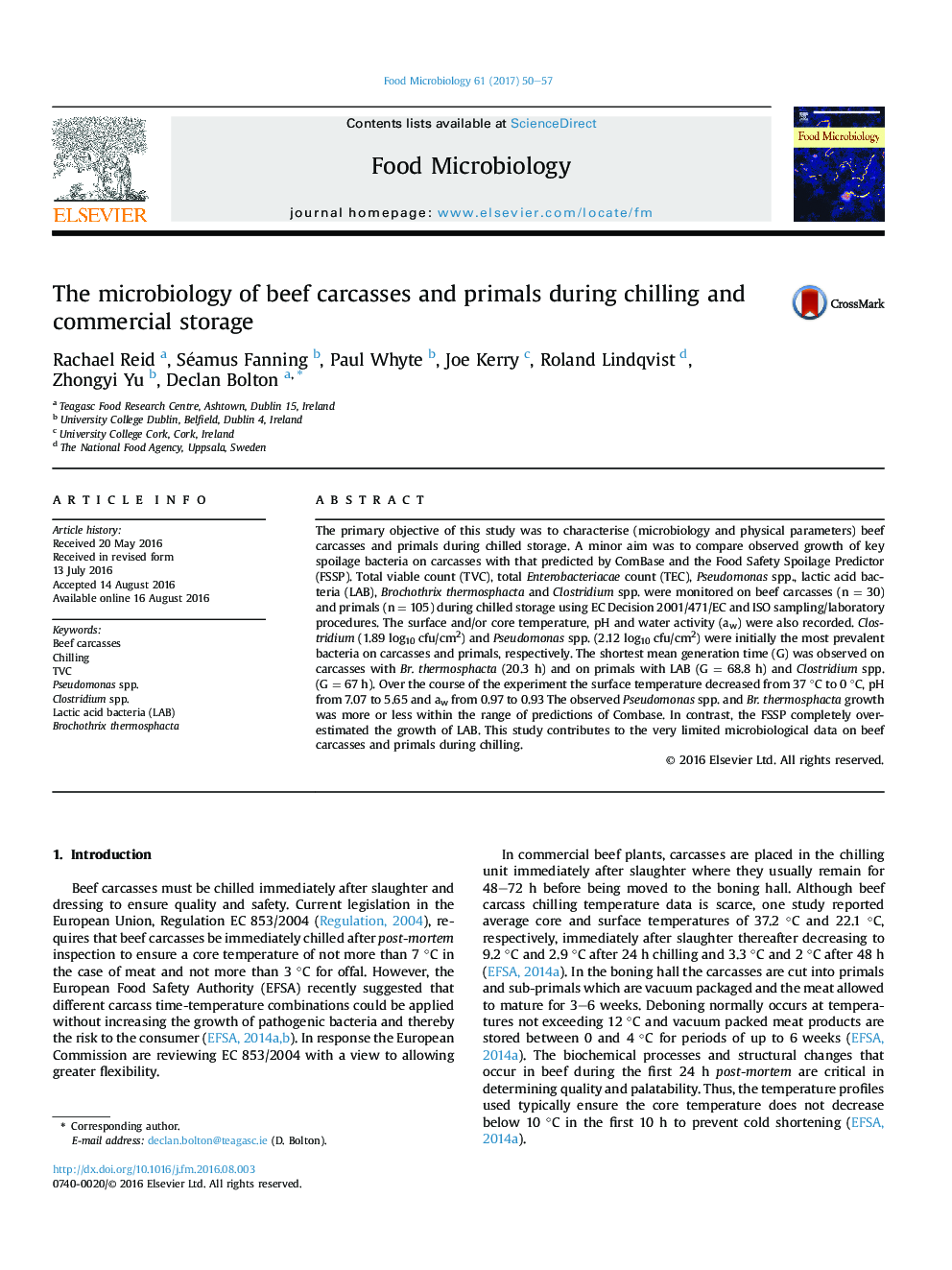| Article ID | Journal | Published Year | Pages | File Type |
|---|---|---|---|---|
| 4362551 | Food Microbiology | 2017 | 8 Pages |
•Pseudomonas concentrations on beef primals at packaging increased during 6 weeks vacuum packaged storage.•Brochothrix thermosphacta grew faster than lactic acid bacteria on vacuum packaged beef primals.•Combase may be used to predict Pseudomonas spp. and Br. thermosphacta growth on beef carcasses.
The primary objective of this study was to characterise (microbiology and physical parameters) beef carcasses and primals during chilled storage. A minor aim was to compare observed growth of key spoilage bacteria on carcasses with that predicted by ComBase and the Food Safety Spoilage Predictor (FSSP). Total viable count (TVC), total Enterobacteriacae count (TEC), Pseudomonas spp., lactic acid bacteria (LAB), Brochothrix thermosphacta and Clostridium spp. were monitored on beef carcasses (n = 30) and primals (n = 105) during chilled storage using EC Decision 2001/471/EC and ISO sampling/laboratory procedures. The surface and/or core temperature, pH and water activity (aw) were also recorded. Clostridium (1.89 log10 cfu/cm2) and Pseudomonas spp. (2.12 log10 cfu/cm2) were initially the most prevalent bacteria on carcasses and primals, respectively. The shortest mean generation time (G) was observed on carcasses with Br. thermosphacta (20.3 h) and on primals with LAB (G = 68.8 h) and Clostridium spp. (G = 67 h). Over the course of the experiment the surface temperature decreased from 37 °C to 0 °C, pH from 7.07 to 5.65 and aw from 0.97 to 0.93 The observed Pseudomonas spp. and Br. thermosphacta growth was more or less within the range of predictions of Combase. In contrast, the FSSP completely overestimated the growth of LAB. This study contributes to the very limited microbiological data on beef carcasses and primals during chilling.
